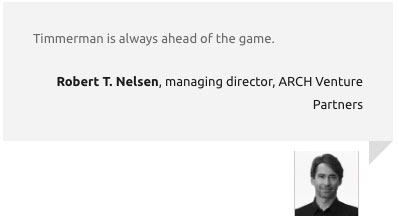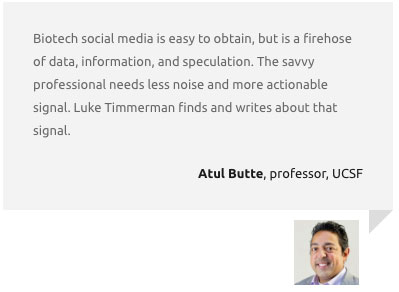Diagnostic Test Developer Points to Academic Blind Spot That Hampers Translation
The COVID-19 pandemic has highlighted the need for reliable diagnostic tests for the new SARS-CoV-2 virus, and treatments that can cure or mitigate its devastating effects.
To have an impact, these diagnostic tests can’t just work brilliantly in a single academic lab. They ultimately need to be rapidly deployable across this large country with 330 million people. Developing an approach that can function at this scale is an aspect of innovation that can easily be overlooked — and often is. After all, some argue, the role of academic science is to discover new things, and publish the findings; what happens next is often viewed as an intellectual derivative, tedious-but-necessary crank turning task that can and should be relegated to commercial organizations.
This mindset seems both surprisingly common and dangerously short-sighted. It adversely impacts not only the translation of academic science, but also the quality of the science itself, depriving researchers the opportunity to pressure-test assumptions in real-world situations, and gain fresh insights from these observations.
I’ve written about the value of a commercial perspective in driving translation (here). The key point: there is value in an intellectual approach that actively contemplates real-world usability. This examination can often sharpen the question and better guide the science.
Bringing real-world considerations into the innovation process early and often has been championed by many experts. Leading proponents include MIT’s Eric von Hippel, who’s highlighted the critical value of lead users. Lean Startup guru Steve Blank advocates entrepreneurs get real-world feedback from potential users as early as possible. He has said this is especially challenging to do in healthcare, as academic biomedical innovators often regarded themselves as the market experts. Since they see themselves as the authority already, they often see little need to spend time truly testing their assumptions in the marketplace.
The importance of getting the translation piece right, and more generally, ensuring university research (where appropriate) finds expression in the real world and helps patients (not just academic CVs) has been a focus of several courageous academic leaders who prioritize diverse engagement over perceived intellectual purity. Some of the leaders include Sue Desmond-Hellmann, former CEO of the Bill & Melinda Gates Foundation and chancellor of UCSF, Atul Butte, a distinguished biomedical data scientist at UCSF, and Bob Langer, the prolific bioengineering professor at MIT.
The gap between sexy science and implementable technology was brought to the fore this week, on the podcast Marketplace Tech, produced and distributed by the non-profit American Public Media. On Monday, host Molly Wood interviewed Purdue University bioengineering professor Jacqueline Linnes, who’s working on developing and implementing a useful diagnostic test for the virus.
The entire discussion is fascinating; I was especially struck – as was Wood – by the translational challenges. As Wood put it, “the science is complicated, but getting from lab to market is even harder.”
As Linnes tells Wood:
“There’s a difference between getting a test to work in the lab 5, 10 or even 100 times, and then getting it to a point that’s manufacturable at the scale that we need. A lot of times when these are in development, the exciting part is getting the actual sensing to work. There’s lots of really cool sensing techniques that are out there that actually are not deployable at all, so there’s a big disconnect between what is manufacturable at scale and what is actually getting made in the lab. For us, if we are developing a device and we’re able to publish a paper on it, we’re super-excited. It’s only after that, that we come back and look at it and realize, ‘This has way too many layers and alignment issues.’ Getting that discussion with manufacturers in the process is really critical.”
Linnes goes on to explain how in general, manufacturing considerations should enter the conversations earlier than they often do. This mindset, including engagement with manufacturers, “has certainly sped things up in my lab as far as developing technologies with manufacturing in mind,” Linnes said, adding, “It’s been beneficial, I think, so that we can reframe how we’re developing these devices and focus on how we’re not just going to make a cool device, but how it’s actually going to go from the lab into usability.”
Part of the challenge in academia, Linnes says, is the way projects are funded.
She explained:
“[W]hen we’re submitting proposals, and they undergo peer review, people get really excited about the innovative new biosensor and they’re not very excited about the mundane development processes to get things out into the world. The way that we’re even reviewing each other is contributing to that.”
Finally, Linnes points out that part of the challenges is that the lab to real world transition represents the “valley of death,” and is “something that nobody’s quite figured out whose job it is. Companies are out there scouting for potential technologies, but the further along the universities can get them, the better, because it’s a risk from them [i.e. companies] to translate something out of the lab into the company.”
Bottom line:
A model of innovation that enables greater continuity and mutual feedback between discovery scientists, including – especially – at universities, and industrial scientists focused on implementation and scaling, could sharpen science and catalyze translation.
Conversely, efforts seeking to construct walls between academia and industry, ostensibly to protect the putative purity and sanctity of the research within academia, are likely to adversely impact translation; make it harder for academic researchers to learn from the real world experiences of industry colleagues; and ultimately harm the patients who most of the academic research was funded to serve.






